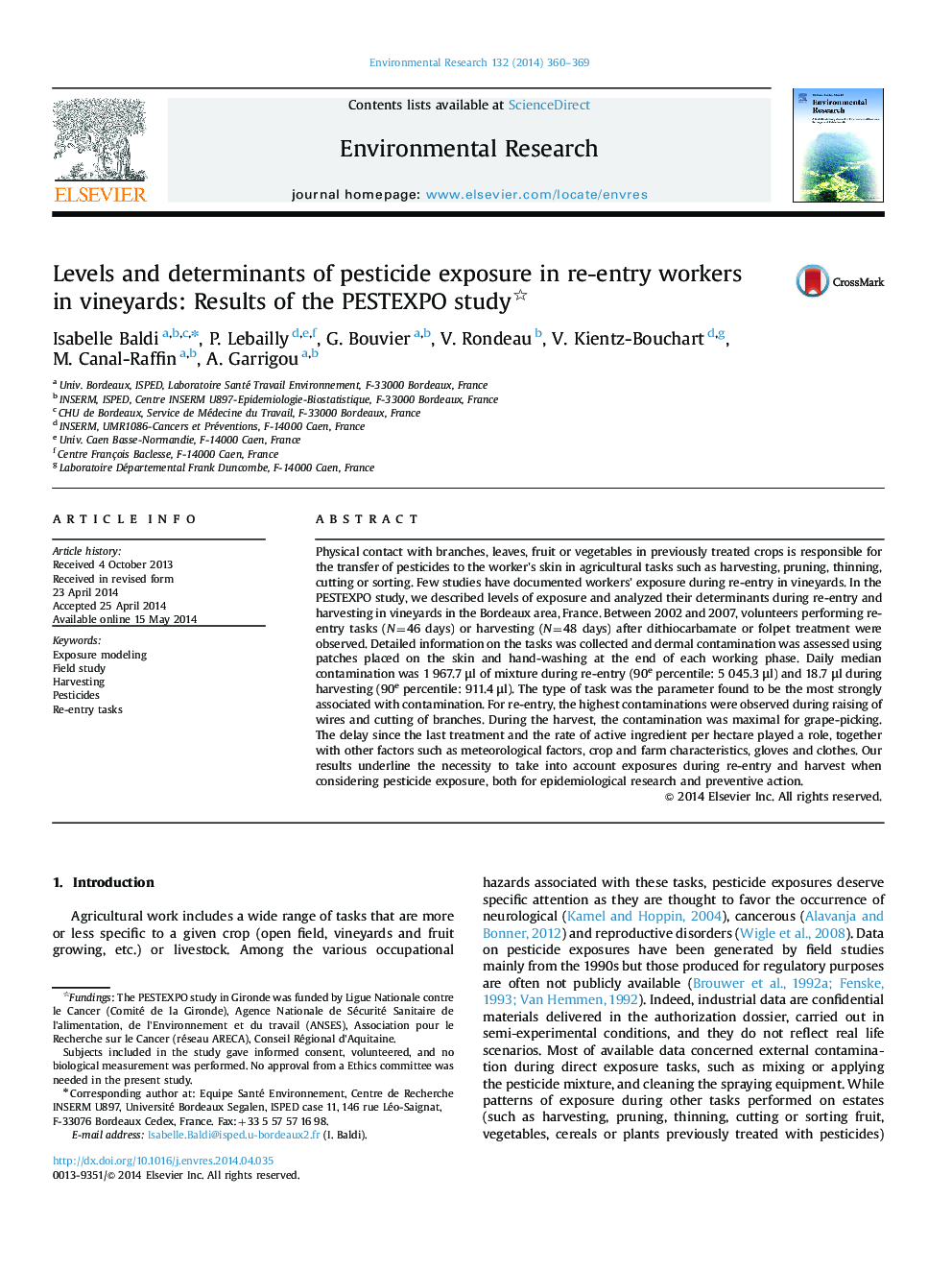| کد مقاله | کد نشریه | سال انتشار | مقاله انگلیسی | نسخه تمام متن |
|---|---|---|---|---|
| 6353007 | 1622569 | 2014 | 10 صفحه PDF | دانلود رایگان |

- Contact with crops is responsible for pesticide transfer to the worker's skin.
- The type of task is strongly associated with the level of pesticide contamination.
- The contamination was comparable during one day of re-entry and one treatment day.
- Epidemiological studies should collect crops, tasks and exposure determinants.
- We question the models presently used for pesticide registration.
Physical contact with branches, leaves, fruit or vegetables in previously treated crops is responsible for the transfer of pesticides to the worker׳s skin in agricultural tasks such as harvesting, pruning, thinning, cutting or sorting. Few studies have documented workers׳ exposure during re-entry in vineyards. In the PESTEXPO study, we described levels of exposure and analyzed their determinants during re-entry and harvesting in vineyards in the Bordeaux area, France. Between 2002 and 2007, volunteers performing re-entry tasks (N=46 days) or harvesting (N=48 days) after dithiocarbamate or folpet treatment were observed. Detailed information on the tasks was collected and dermal contamination was assessed using patches placed on the skin and hand-washing at the end of each working phase. Daily median contamination was 1 967.7 μl of mixture during re-entry (90e percentile: 5 045.3 μl) and 18.7 μl during harvesting (90e percentile: 911.4 μl). The type of task was the parameter found to be the most strongly associated with contamination. For re-entry, the highest contaminations were observed during raising of wires and cutting of branches. During the harvest, the contamination was maximal for grape-picking. The delay since the last treatment and the rate of active ingredient per hectare played a role, together with other factors such as meteorological factors, crop and farm characteristics, gloves and clothes. Our results underline the necessity to take into account exposures during re-entry and harvest when considering pesticide exposure, both for epidemiological research and preventive action.
Journal: Environmental Research - Volume 132, July 2014, Pages 360-369